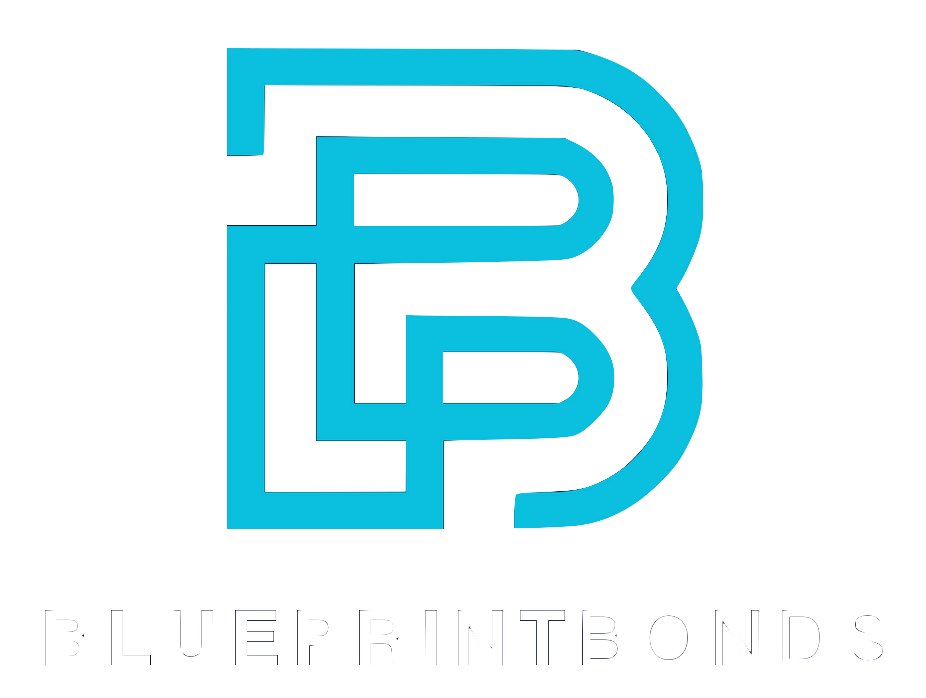In the complex world of construction, bonds play a pivotal role in safeguarding projects and relationships. General contractors (GCs) often find themselves navigating the challenges posed by subcontractor defaults, workforce shortages, and administrative hurdles. Understanding the nuances of subcontractor bonds can not only protect projects but also foster trust and efficiency between GCs and subcontractors. This article delves into what general contractors wish their subcontractors knew about bonds, shedding light on their importance, the current industry landscape, and practical insights for smoother collaborations.
The Rising Importance of Subcontractor Bonds
Subcontractor bonds have become increasingly critical in today’s construction industry. With 70% of general contractors reporting a rise in subcontractor defaults in 2024 compared to the previous year, the risk landscape has shifted dramatically. These defaults often lead to costly project delays or outright cancellations, with approximately half of GCs experiencing such setbacks due to subcontractor failures.
In this context, bonds serve as a financial safety net. They protect general contractors from the fallout when a subcontractor cannot fulfill their contractual obligations. As one expert insight highlights, subcontractor bonds are essential for protecting general contractors from the risk of subcontractor failure on the project. This protection is not just about mitigating financial loss but also about maintaining project timelines and reputations.
Given these stakes, subcontractors who understand the role of bonds and approach them proactively can position themselves as trusted partners in the eyes of GCs, potentially opening doors to more and better opportunities. Furthermore, the process of obtaining a subcontractor bond often requires a thorough evaluation of a subcontractor's financial health, experience, and past performance. This not only ensures that only qualified subcontractors are engaged but also fosters a culture of accountability within the industry. As subcontractors strive to meet the rigorous standards set by bonding companies, they inadvertently enhance their own operational practices, leading to improved quality and efficiency on job sites.
Moreover, the increasing emphasis on subcontractor bonds reflects a broader trend in the construction sector towards risk management and due diligence. General contractors are now more inclined to seek out subcontractors who can demonstrate their reliability through bonding, which in turn can lead to a more stable project environment. This shift is particularly significant in large-scale projects where the stakes are high, and the margin for error is slim. By investing in bonds, subcontractors not only safeguard their own interests but also contribute to a more resilient construction ecosystem, where collaboration and trust can flourish amidst the complexities of modern building projects.
How Workforce Shortages Impact Bonding Requirements
The construction industry is currently grappling with a significant workforce shortage. The Associated Builders and Contractors (ABC) reported a shortfall of half a million workers in 2023, a factor that has intensified bonding requirements for subcontractors. This shortage means that GCs are more cautious and often require stronger financial assurances before awarding contracts.
Subcontractors may find these heightened bonding requirements challenging, but they are a direct response to the increased risks associated with labor scarcity. Bonds help ensure that subcontractors have the capacity and reliability to complete their work despite industry pressures. With fewer skilled workers available, general contractors are understandably more concerned about project timelines and quality, leading them to demand more stringent bonding conditions as a safeguard against potential delays or failures.
Understanding this context is crucial for subcontractors aiming to navigate the bonding process successfully. By recognizing that bonding requirements are not arbitrary hurdles but rather risk management tools, subcontractors can better prepare their financial and operational standing to meet these expectations. Additionally, subcontractors might consider investing in workforce development initiatives, such as training programs or partnerships with local trade schools, to not only bolster their labor pool but also enhance their credibility in the eyes of general contractors. This proactive approach can help mitigate the risks associated with labor shortages and improve their chances of securing necessary bonds.
Moreover, the current labor market dynamics have led to increased competition among subcontractors, as many are vying for a limited pool of available workers. This competition can drive up labor costs, further complicating the financial landscape for subcontractors. As a result, subcontractors must also be strategic in their bidding processes, ensuring that they account for these rising costs while still meeting the bonding requirements set forth by general contractors. For a deeper dive into these trends, see the ABC’s report on workforce shortages and bonding.
Common Misconceptions and Challenges Around Bonds
Despite their importance, bonds are often misunderstood or viewed as burdensome by subcontractors. A study on Subcontractor Default Insurance (SDI) revealed that 73% of subcontractors find the contractor’s prequalification process invasive, and 83% consider SDI an administrative burden. These perceptions can create friction and slow down project onboarding. Many subcontractors feel overwhelmed by the paperwork and the perceived complexity of the bonding process, which can lead to delays in securing contracts and ultimately impact their bottom line.
However, it’s essential to differentiate between SDI and traditional bonding. While SDI involves insurance policies to cover defaults, bonds are surety agreements that guarantee performance or payment. Both mechanisms aim to reduce risk but operate differently and come with distinct administrative processes. Understanding these nuances is crucial, as bonds are often required for public projects, and failing to secure them can exclude subcontractors from lucrative opportunities. Additionally, the bonding process can serve as a valuable tool for subcontractors to demonstrate their financial stability and reliability to potential clients.
Subcontractors who educate themselves about these differences and the rationale behind bonding requirements can alleviate misunderstandings. Moreover, building trusted relationships with bonding agents and GCs can streamline these processes, reducing the perceived administrative load. This approach not only helps subcontractors meet requirements more efficiently but also enhances their reputation as reliable partners. By engaging in open communication and seeking guidance from experienced professionals, subcontractors can navigate the bonding landscape more effectively. Furthermore, attending workshops or industry seminars focused on bonding and insurance can provide valuable insights and foster a deeper understanding of how these tools can be leveraged to their advantage.
Why Bonds Matter for Project Success and Industry Growth
The construction industry is poised for growth, with projections indicating an increase of nearly 5.2% in 2021 and beyond. This positive outlook means more projects and opportunities, but also heightened competition and scrutiny from GCs. Bonds act as a quality signal, demonstrating that a subcontractor is financially stable and committed to fulfilling their obligations.
For GCs, bonds are not just about risk mitigation; they are tools that help maintain project momentum and client confidence. When subcontractors default, the ripple effects can stall entire projects, affecting timelines, budgets, and client relationships. With about 50% of GCs having experienced project delays or cancellations due to subcontractor defaults, the stakes are high.
Subcontractors who understand the strategic value of bonds can better align themselves with GCs’ priorities, fostering stronger partnerships and smoother project execution. This alignment is increasingly important as the industry navigates workforce shortages and rising project demands. For more insights on construction trends and the role of bonds, visit this industry report on construction growth.
Moreover, the bond market itself is evolving, with new types of bonds emerging to cater to the diverse needs of the construction sector. Performance bonds, payment bonds, and bid bonds each serve unique purposes, ensuring that different aspects of a project are secured. Performance bonds guarantee that the subcontractor will complete the project according to the contract terms, while payment bonds ensure that all subcontractors and suppliers are paid for their work. This layered protection not only safeguards the GCs but also promotes a healthier financial ecosystem within the industry, encouraging more subcontractors to participate in larger projects.
Additionally, the increasing complexity of construction projects, often involving multiple stakeholders and intricate regulatory requirements, underscores the importance of bonds. As projects become more ambitious, the need for reliable financial assurances grows. GCs are now more inclined to prioritize subcontractors with strong bonding capabilities, as this not only reduces their risk but also enhances their reputation in the market. By fostering a culture of accountability and reliability through bonding, the industry can better navigate the challenges ahead and capitalize on the growth opportunities that lie within.
Practical Tips for Subcontractors Navigating the Bonding Process
Successfully securing bonds requires more than just financial strength; it involves strategic preparation and relationship-building. Subcontractors can take several steps to improve their bonding prospects:
- Maintain Transparent Financial Records: Bonding agents assess financial health rigorously. Keeping clear, up-to-date financial statements can expedite approvals.
- Build Relationships with Bonding Agents: Trusted relationships facilitate better communication and tailored bonding solutions. GCs value subcontractors who proactively manage these connections.
- Understand Prequalification Requirements: While prequalification processes may feel invasive, they are designed to verify capacity and reliability. Being responsive and cooperative can smooth the path to bonding.
- Invest in Risk Management: Demonstrating risk mitigation strategies, such as safety programs and quality controls, can enhance bonding confidence.
By adopting these practices, subcontractors not only improve their chances of obtaining bonds but also position themselves as dependable collaborators, which can lead to more consistent work and stronger industry standing. Additionally, subcontractors should consider attending industry seminars and workshops that focus on bonding and financial management. These events often provide valuable insights into the latest trends and requirements in bonding, as well as opportunities to network with bonding agents and other industry professionals. Engaging in continuous education can also help subcontractors stay ahead of the curve, ensuring they are well-prepared to meet the evolving demands of the construction landscape.
Furthermore, subcontractors should not underestimate the importance of a solid project portfolio. A well-documented history of successful projects, complete with references and testimonials, can serve as a powerful tool in the bonding process. When bonding agents see a track record of completed projects that were delivered on time and within budget, it significantly boosts their confidence in the subcontractor's capabilities. This portfolio should highlight not only the financial aspects but also the quality of work and the subcontractor's ability to manage challenges effectively, showcasing their commitment to excellence in every project undertaken.
Looking Ahead: Bonds as a Foundation for Trust and Stability
As the construction landscape evolves, bonds will remain a cornerstone of project security and partnership trust. The challenges of subcontractor defaults, workforce shortages, and administrative complexities underscore the need for clear communication and mutual understanding between GCs and subcontractors. In an industry where timelines are tight and budgets are often stretched, the role of bonds becomes even more critical. They serve not only as a financial safety net but also as a testament to the reliability and professionalism of those involved in a project.
General contractors wish subcontractors recognized that bonds are not merely bureaucratic hurdles but vital instruments that protect everyone involved—from the subcontractor and GC to the project owner. Embracing this perspective can transform how subcontractors approach bonding, leading to more resilient projects and lasting professional relationships. When subcontractors view bonds as a badge of credibility, they can enhance their reputation in the marketplace, making them more attractive to potential clients and partners. This shift in mindset can lead to increased opportunities for collaboration and growth within the industry.
For subcontractors ready to deepen their knowledge and improve their bonding strategies, resources and expert advice are available to guide them through this essential aspect of construction management. Workshops, webinars, and mentorship programs can provide valuable insights into the bonding process, helping subcontractors understand the nuances of different types of bonds, such as performance bonds and payment bonds. Additionally, engaging with industry associations can offer networking opportunities and access to best practices that further strengthen their bonding capabilities.
Learn more about how subcontractors can avoid financial distress and navigate bonding challenges at ForConstructionPros.com.




